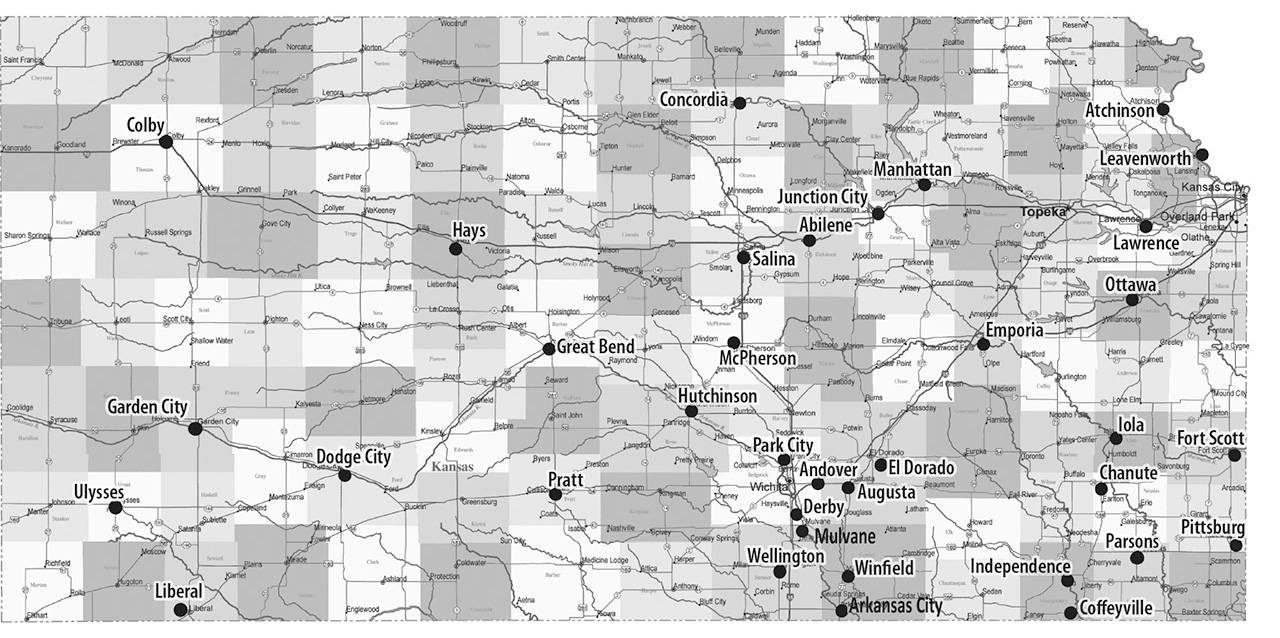Lessons in population health from small-city Kansas

LAWRENCE — Mahbub Rashid sees cities differently than most people. And you might say the dean of the University of Kansas School of Architecture & Design ought to do that.
But Rashid has taken spatial analysis of urban development to the cutting edge of technology — and this view of small-town Kansas suggests to him that much more can be done to promote the health of people who live there.
Rashid’s new book, “Built Environment and Population Health in Small-Town America: Learning from Small Cities of Kansas” (Johns Hopkins University Press), looks at how lifestyle behaviors and health indicators are associated with spatial planning and design factors in 36 small Kansas cities with populations between 2,500 and 49,999.
Rashid measured the size and density of each city, its distance from a large city, its daytime population change and the average commuting time of its residents – and he found that all these factors seem to affect how population health is associated with the built environment there.
“A daily two-hour commute is not only a long time in the car, but it also decreases the time one has available to spend with family and friends by that amount,” Rashid said.
Increasing distance from large cities increases isolation — something that has become a reality in small towns with the loss of 20th century transportation options like bus and train service.
“In essence, the relationship between population health and built environment seems to depend on how rural you are,” Rashid said. “And we should develop our design and planning guidelines for small cities with that in mind.
“Having more grocery stores, a better food network or more sidewalks are all desirable to improve population health in small towns, but there may be other ways to accomplish the same ends. For instance, if we are able to reduce commute time to the nearby big city through better public transportation systems, then probably lifestyle will change for the better. People might use parks more, and, as a result, their health and relationships with others might improve.”
Rashid said he sympathized with the various headwinds confronting small-city planners and designers.
“These people are in a bind,” he said. “For reasons beyond their control, they can do very little to keep critical-access-care hospitals, which are often the economic engine of these small cities, from closing down. They can also do very little to get the transportation services these cities need. There is even a resistance, in some cases, to the external government funding that they need to accomplish anything at all. So you see a vicious cycle of decline in the built environment and population health here in these small cities.”
And yet the book cites a few success stories.
Rashid writes that for Baldwin City, rebuffing a big-box store helped save local merchants, preserve the vitality of its downtown and perhaps even some walkability that contributes to public health. And leaders of Montezuma, he said, “found the balance between the development of wind turbines and their economic interest.”
Rashid is a pioneer in studying population health in relation to the built environments of small cities. He said he hoped the book would offer support to those who care about the health of residents in small cities nationwide.
Rashid said that leaders of small cities should partner regionally to achieve critical mass and take public health into account in all their development decisions.
“Small towns studied in the book are not big enough to have a planner’s office,” Rashid said. “They may have one person who works as a liaison between the city government and the regional bodies. ... So they will need to be a jack of all trades. They need a good understanding of the politics of the place and how to do public relations while applying appropriate planning tools for improving population health.
“A traditional urban-planning mindset may not work for small-town planning and design. And for this, we will need a planning education relevant to small towns.”